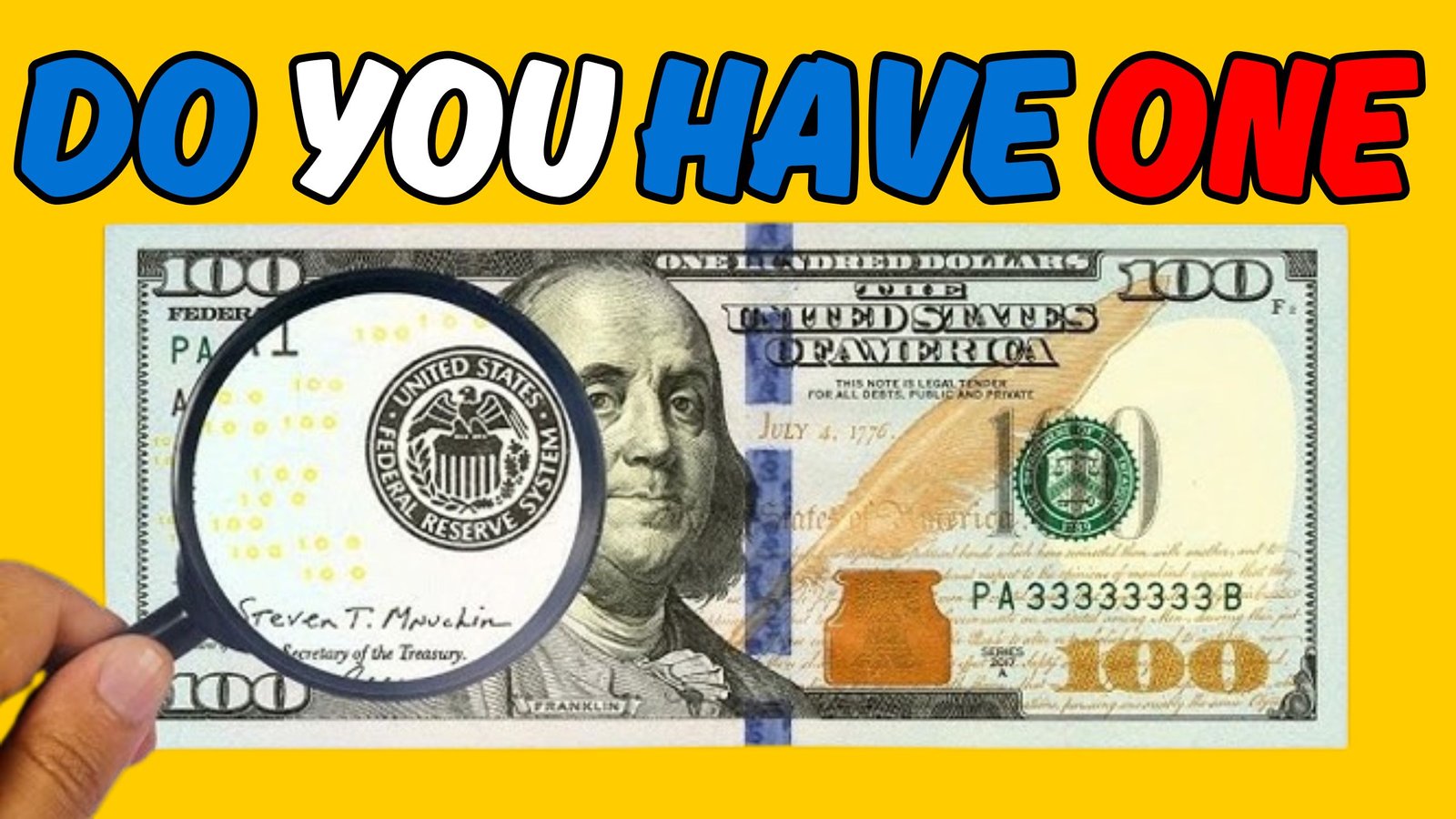$100 Bill : What may look like an ordinary $100 bill could, in fact, be worth a small fortune. One such example—a 2013 series $100 note with a rare offset printing error—has stunned collectors by selling for an astonishing $120,000 at auction. These bills aren’t locked away in museums or private collections; some are still quietly circulating, waiting to be discovered in everyday wallets and cash drawers.
Understanding the Offset Printing Error
Offset printing errors happen when ink from one side of the bill accidentally transfers onto the other, usually due to a sheet sticking to the printing plate. As a result, design elements appear ghosted or duplicated on the wrong side. On the $100 bill in question, portions of the reverse design are visibly printed onto the front, creating an unmistakable flaw that turns it into a collector’s dream.
Why It’s Rare on High-Denomination Bills
Printing errors are more commonly seen on lower-value bills like $1s and $5s. That’s why a $100 bill with this type of mistake is so exceptional—it’s not just the error that makes it valuable, but also the fact that it happened on a high-denomination note. The larger the denomination, the more scrutiny it usually undergoes during quality control, which means very few flawed bills of this kind ever leave the printing facility.
Condition Is Key to Skyrocketing Value
The bill’s condition plays a major role in how much collectors are willing to pay. A note with an offset error that is crisp, uncirculated, and perfectly preserved can sell for significantly more than one that’s folded, creased, or faded. In the case of the $120,000 bill, its pristine quality combined with the dramatic nature of the error made it a standout piece in the eyes of collectors and auction houses.
Still Circulating Among Everyday Transactions
One of the most exciting aspects of this story is the idea that similar $100 bills may still be in circulation. Because many people don’t inspect their cash closely—especially larger bills—it’s entirely possible that rare notes like this one continue to pass unnoticed through hands every day. That means your next trip to the bank or grocery store could come with a surprising bonus—if you know what to look for.
How to Spot an Offset Error on Your Bills
If you want to check your own $100 bills, look for any signs of printing that seem duplicated, misaligned, or ghost-like—especially if a part of the back design is faintly visible on the front. Offset printing errors often have a mirrored or smudged appearance. Take a moment to hold the bill up to the light and inspect both sides carefully, especially if it looks visually unusual.
The Treasure Hidden in Plain Sight
This story proves that valuable collectibles aren’t always hidden in attics or locked behind glass—they may be sitting in your wallet right now. The 2013 $100 bill with an offset error shows that modern currency can still yield incredible finds. All it takes is a careful eye, a little curiosity, and some knowledge about what makes a note rare.
Frequently Asked Questions (FAQs..)
Q1: What is an offset printing error on a $100 bill?
A: An offset printing error happens when the ink from one side of the bill accidentally transfers onto the other. This usually occurs when a sheet sticks to a printing plate, causing part of the bill’s design to appear mirrored or ghosted where it shouldn’t be. It’s one of the most dramatic and visible types of printing mistakes.
Q2: How can I tell if my $100 bill has an offset error?
A: Look closely at the front and back of the bill. If you see design elements from the back appearing faintly or reversed on the front (or vice versa), that’s a strong sign of an offset printing error. The error will often appear smudged, mirrored, or misaligned.
Q3: Why is a $100 bill with this error so valuable?
A: It’s rare for such errors to occur on high-denomination bills like the $100. Because of strict quality control, most mistakes are caught before bills leave the Bureau of Engraving and Printing. When one does slip through, especially in excellent condition, collectors are willing to pay top dollar for it.
Q4: Are these error bills still in circulation?
A: Yes, it’s possible. Some flawed bills weren’t discovered and are still being used in everyday transactions. Since most people don’t closely inspect their cash, these notes can go unnoticed for years—even when they’re worth thousands of dollars.





